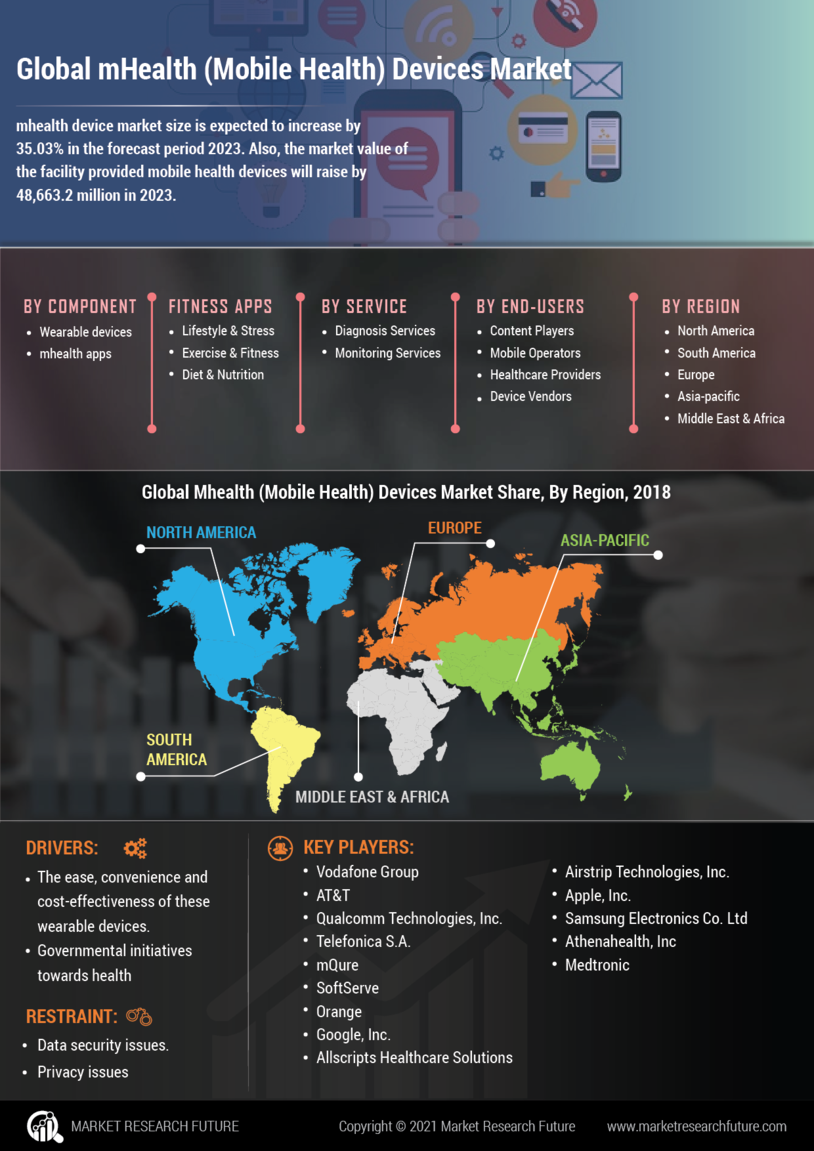Government Initiatives and Support
Government initiatives and support are crucial drivers of the Global mHealth Device Market Industry. Various countries are implementing policies that promote the adoption of mobile health technologies. For example, funding for telehealth programs and incentives for healthcare providers to utilize mHealth solutions are becoming more common. These initiatives not only enhance access to healthcare services but also encourage innovation within the industry. As a result, the market is expected to grow at a compound annual growth rate of 13.56% from 2025 to 2035. Such supportive measures indicate a robust commitment to integrating mHealth devices into mainstream healthcare.
Increasing Health Awareness Among Consumers
Increasing health awareness among consumers significantly influences the Global mHealth Device Market Industry. As individuals become more informed about health and wellness, there is a growing inclination to utilize mHealth devices for personal health management. This trend is evident in the rising sales of fitness trackers and health monitoring applications. The focus on preventive healthcare is likely to drive market expansion, as consumers seek tools that empower them to take control of their health. Consequently, the Global mHealth Device Market Industry is poised for substantial growth, with projections indicating a market size of 54.1 USD Billion in 2024.
Rising Demand for Remote Patient Monitoring
The Global mHealth Device Market Industry experiences a notable surge in demand for remote patient monitoring solutions. This trend is driven by the increasing prevalence of chronic diseases, which necessitate continuous health tracking. For instance, devices that monitor heart rate, glucose levels, and blood pressure are becoming essential for patients managing conditions such as diabetes and hypertension. The market is projected to reach 54.1 USD Billion in 2024, reflecting a growing reliance on technology to facilitate healthcare delivery. This shift not only enhances patient engagement but also reduces healthcare costs, thereby contributing to the overall growth of the Global mHealth Device Market Industry.
Technological Advancements in Wearable Devices
Technological advancements play a pivotal role in shaping the Global mHealth Device Market Industry. Innovations in wearable technology, such as smartwatches and fitness trackers, are enhancing the functionality and appeal of these devices. Features like heart rate monitoring, sleep tracking, and activity logging are increasingly integrated into consumer electronics. The proliferation of these devices is expected to drive market growth, with projections indicating a rise to 219.3 USD Billion by 2035. As consumers become more health-conscious, the demand for sophisticated wearable devices is likely to increase, further propelling the Global mHealth Device Market Industry.
Integration of Artificial Intelligence in mHealth Devices
The integration of artificial intelligence (AI) in mHealth devices represents a transformative trend within the Global mHealth Device Market Industry. AI enhances the capabilities of health monitoring devices by providing personalized insights and predictive analytics. For instance, AI algorithms can analyze user data to identify potential health risks and suggest preventive measures. This technological evolution not only improves user experience but also fosters greater adherence to health management protocols. As AI continues to evolve, its application in mHealth devices is likely to expand, contributing to the projected growth of the market to 219.3 USD Billion by 2035.

















Leave a Comment